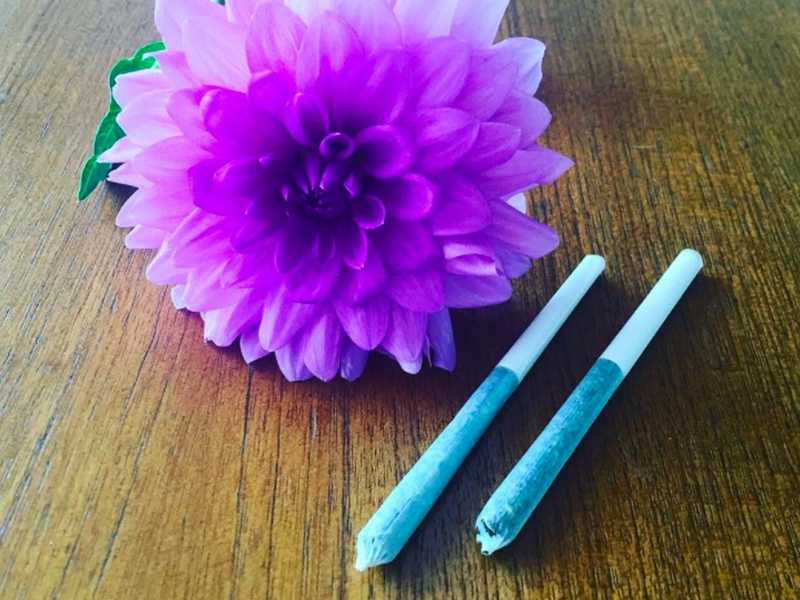At HelloMD we talk to a lot of patients and what we’ve learned over time is that people have a lot of questions in regards to cannabis. In response to this, we launched Answers. Answers allows people to ask any cannabis related question on our platform and get answers from the community as well as our doctors and nurses.
This week, we highlight 3 popular questions and answers we have received:
Q: How many milligrams of THC are in a typical joint?
I usually smoke joints and I am fine with that. But if I were to start taking edibles instead, what would be a similar dose?
Answer @DrEdmunds: If you roll your own, you can calculate the quantity of THC based on the amount of cannabis you are putting in the joint and the concentration of THC known to be in the strain you are using.
If you are referring to the average dispensary pre-roll, you are talking about 750mg - 1g of cannabis per joint. The average THC concentration in today's strains is around 12%, which is about 3-4 times as potent as strains a couple decades ago. Using these numbers, this means that your typical pre-roll will have approximately 100mg of THC. Some strains have a THC concentration upwards of 25%.
The bottom line is, a lot! Caution is advised, and many patients will use one joint over several days for this reason.
In general, I discourage smoking, because marijuana smoke contains carbon monoxide, tar, carcinogens and other chemicals which may be toxic and damaging to body tissues. Vaporizing shredded flower or CO2-extracted oil concentrates are considered safe alternatives, as we are not aware of any damaging substances in marijuana itself. Vaporizers control the temperature of your medicine such that it only turns into vapor, akin to water turning into steam; and they do not burn the cannabis. Therefore, no smoke with its potentially harmful products of combustion is created.
Read 6 more answers to this question.
Q: What is the best edible for insomnia?
I use the Kiva bars at a very low dose right now (approx 7 mg THC) but I still wake up in the middle of the night and can't get back to sleep. I'm new to this and have a low tolerance. I am looking for an edible that will help me sleep but won't make me high?
embed: https://www.instagram.com/p/BW0ryc3AkXb/
Answer @DrOlson: There are many opinions about insomnia because everyone is different and the cannabis affects everyone differently so be aware that what I suggest usually works but it typically will not work for everyone. We do offer a great chat room with lots of opinions.
FOLLOW US ON FACEBOOK & INSTAGRAM
I recommend that you get your CBD and THC at a high 1:1 level and you will sleep. Too many people do high THC and I think that keeps a party in your head all night and when that happens it is an indication you need more CBDs to shut the party down. If in addition you have aches and pains be sure you treat those problem areas with the CBD dominant topical salve and you will sleep well. You may rest better if you keep a vape pen of 1:1, CBD:THC next to your bed in case you wake in the night, 1-2 puffs will likely put you to sleep.
Read 9 more answers to this question.
Q: Can I use cannabis as a replacement for Vicodin?
I suffer from chronic back pain and have been using vicodin. However, my doctor has stated that I need to end my reliance on this drug, and I am looking for a replacement. Advill and others don't provide the relief I am looking for. What cannabis products might be a good choice for me?
embed: https://www.instagram.com/p/BXghGg7AClJ/
Answer @sankMD - Dr Sank: Limiting your exposure to opiate medications is a great way to improve your overall health and limit the risks that come with this class of medications. Many patients experience side effects such as nausea, constipation, drowsiness, and poor appetite not to mention the long-term risks of abuse and addiction.
There are several options for pain control depending on the specific underlying cause of your pain. You may consider non-steroidal pain medications like ibuprofen, naproxen, and meloxicam. Local pain treatment with a lidocaine patch or voltaren gel is also an option with lower risk of side effects. Of course, there are non-pharmaceutical options, which is likely the reason for your question on this site.
The same principles that apply to traditional medications apply to cannabis. A topical cannabis-infused product is recommended as the first approach to pain control. This could include a cannabis-infused patch, lotion, balm, or ointment applied directly to the skin or massaged into the skin. Higher CBD content products tend to work well for this since there is an anti-inflammatory property associated with CBD.
Pain can also be treated with as needed vaporized cannabis products. Vaporizers work well for immediate relief since they take 5 minutes or less to feel the effect. Again, a higher CBD product is preferred due to its anti-inflammatory properties. THC can be effective but tends to be more of a way to distract from pain as opposed to treating the inflammation associated with pain. You own trial and error is important when treating pain. Just remember to use as little as needed for relief without overdoing it.
Finally, don't forget about conservative pain management using physical therapy, massage therapy, heat and cold packs, and acupuncture which can be very effective for certain individuals depending on the underlying cause of the pain.
Read 7 more answers to this question.
If you're new to cannabis and want to learn more, take a look at our Cannabis 101 post. HelloMD can help you get your medical marijuana recommendation; it's 100% online, private and efficient.
